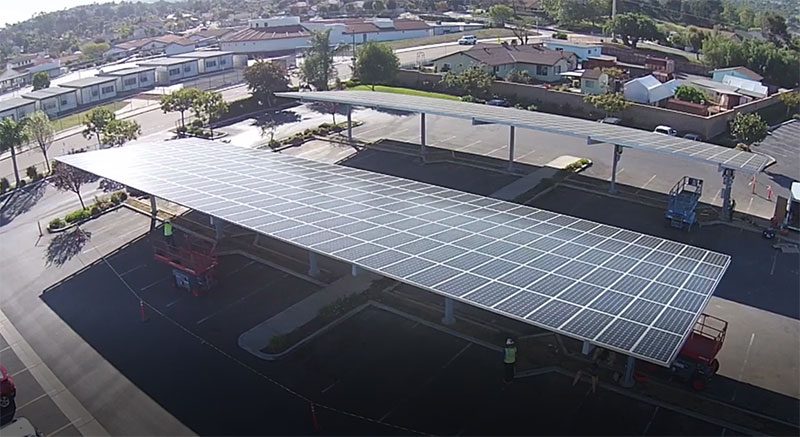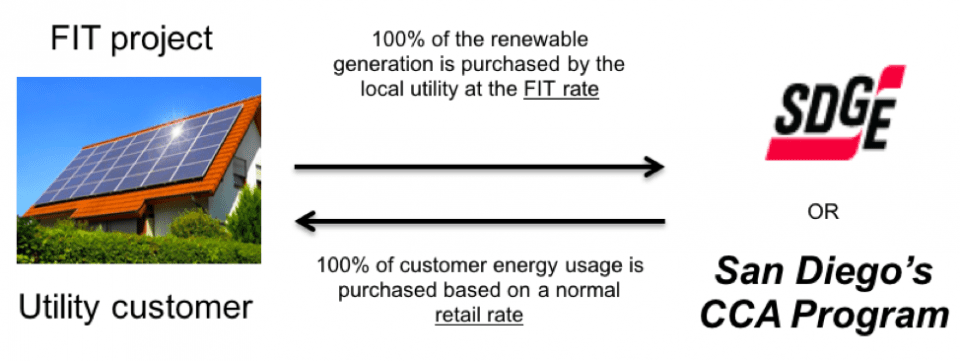The Best Ideas from COP30, the UN Climate Summit in Brazil – 18 December 2025
The Clean Coalition was a partner organization for this webinar, which took place on 18 December 2025 at 10am.
Read More
Helping San Diego get to 100% renewables by 2035
The Clean Coalition is excited to be partnering with the City of San Diego on the City’s Solar Energy Innovation Network (SD SEIN) Initiative.
As part of this work, the Clean Coalition designed a Feed-In Tariff (FIT) with streamlined interconnection to address the financial and economic limitations that currently exist in the market.
FITs are powerful tools that leverage a standardized power purchase agreement (PPA) to bring clean local energy online quickly, reliably, and cost-effectively.

Significant challenges remain to the deployment of distributed solar systems between 500 kilowatts (kW) and 2 MW in size using the current built environment:
Because of issues like these, a mechanism is needed to allow a developer to sell the power generated by a solar system to a load-serving entity in such a way that incentivizes the deployment of solar across the built environment. The FIT developed by the Clean Coalition addresses these market constraints and needs.
The design for the FIT recommends the use of Market Responsive Pricing (MRP), which allows the price paid under the FIT for both solar and storage to adjust based on market response; this ensures that the load-serving entity pays the optimal price for clean local energy. Market Responsive Pricing is critical to successful procurement under the FIT, because it avoids these potential issues:

A pricing comparison between the SD FIT and SDG&E’s business-as-usual (BAU) renewables procurement, on a 20-year levelized basis, shows that local renewables procured under the San Diego FIT will cost less than half the price of SDG&E’s BAU renewables, which would almost entirely be remote centralized renewables that also require exorbitantly expensive transmission lines. The analysis found that the FIT-procured local renewables will cost 5.3 cents/kilowatt-hour (kWh), compared to 14.1 cents/kWh for BAU-procured renewables.
Another innovation in the San Diego FIT design is a Dispatchability Adder to make renewable energy available whenever it’s needed, instead of only when the sun is shining or the wind is blowing. The San Diego FIT also includes a community benefit adder to encourage project siting in disadvantaged communities and on tax-exempt facilities, such as municipal properties, nonprofit facilities, public housing, and schools.
The FIT design for San Diego made these recommendations for project eligibility:
The only approach that has been proven to unleash wholesale distributed generation (WDG) in the United States.
The latest in clean local energy
Learn about our innovative projects and initiatives on our blog, and see what others are reporting about our important work.
The Clean Coalition was a partner organization for this webinar, which took place on 18 December 2025 at 10am.
Read MoreThis podcast episode of Energy Central's "Power Perspectives" welcomes Craig Lewis, Founder and Executive Director of the Clean Coalition, to explore how local solar and storage can flatten the duck curve, cut costs, and build a more resilient grid.
Read MoreThe Clean Coalition presented during this in-person gathering, held on Friday, 5 December 2025 from 3:30–5:00 pm PST at CEC’s Environmental Hub, 1219 State St Suite A, Santa Barbara, CA 93101.
Read More